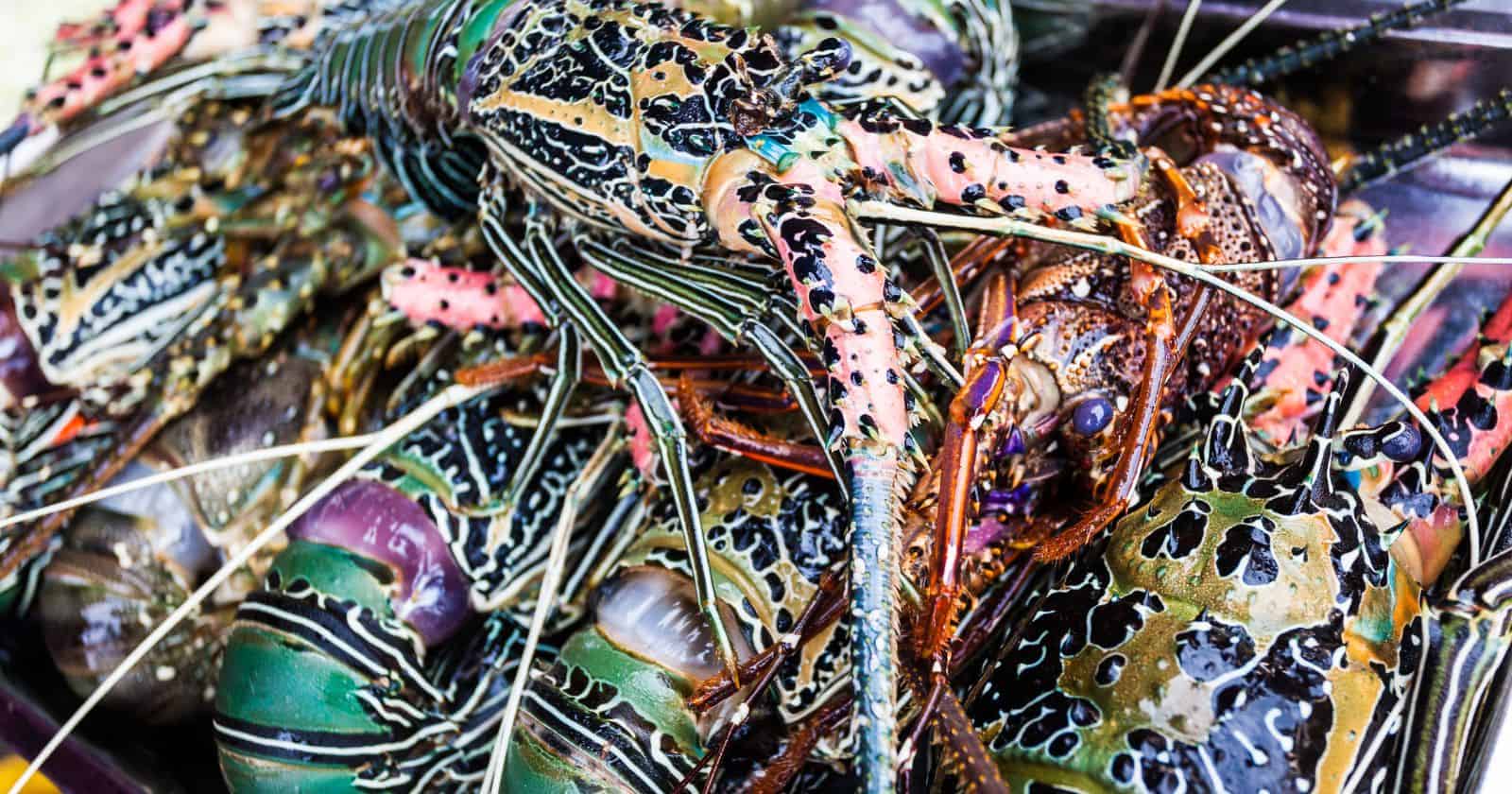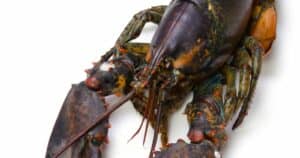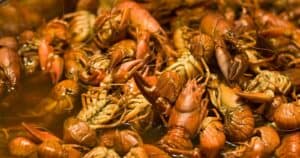How many lobsters does it take to obtain 1 lb of mouthwatering lobster meat? Well, on average, it typically requires around 5 lobsters to yield that heavenly pound. However, the precise amount can vary due to factors such as the size of the lobster and the specific season it’s harvested in.
Let’s explore this further and learn some interesting facts about lobster meat conversion.
Factors Affecting Lobster Quantity
Factors Affecting Lobster Quantity:
- Total landings: The total number of lobsters caught directly impacts the overall quantity of lobsters available. The more lobsters that are caught, the fewer there will be left in the population to reproduce and replenish their numbers.
- Weight of markets and canners: The weight of lobsters sold in markets and canners also plays a role in the quantity of lobsters available. If larger lobsters are being targeted and sold, it can reduce the number of reproductive adults and impact the overall population size.
- Number of lobsters: The sheer number of lobsters in a given area can affect the quantity available for harvest. A higher population density may result in more lobsters being caught, but if not properly managed, it can also lead to overfishing and a decline in the population.
- Number of juvenile lobsters per trap day: The number of juvenile lobsters caught per trap day is another factor that influences the overall quantity of lobsters. If too many juveniles are being caught, it can hinder the growth and sustainability of the population.
- Water temperature: Lobsters are greatly influenced by water temperature, as it affects their metabolism, spawning, development, and growth. Increased summer water temperatures have been linked to declines in lobster populations, impacting the quantity available for harvest.
- Abundance: The overall abundance of lobsters in a given area is an important factor in determining the quantity available for harvest. If the population is thriving, there will be more lobsters to catch, but if numbers are low, it can limit the quantity available.
Shell-on Weight and Meat Yield
On average, hard-shell lobsters yield around 20-28% meat, while soft-shell lobsters contain around 15-20% meat. A hard-shell lobster will generally yield 19-22% of lobster meat, whereas a summer Maine New Shell Lobster, which typically has a soft shell, will yield 16-18%.
The yield of meat from a lobster’s tail is around 20-25% of the total weight, depending on whether it’s hard or soft-shell. It’s important to note that hard-shell lobsters yield more meat because they are more mature.
To understand how many lobsters it takes to get 1 lb of lobster meat, we can consider the average yield of 20% from the shell-on weight. This means that a 1-pound lobster will yield about 3 ¼ ounces of meat.
Taking into account the average meat yield of 20%, we can calculate how many lobsters it takes to get 1 lb of lobster meat. On average, 1 lb. of lobster meat comes from 5 lobsters. This estimate accounts for the fact that not all of the lobster’s weight is meat and that shell-on weight includes the weight of the shell.
Soft-shell vs. Hard-shell Lobsters
When it comes to soft-shell vs. hard-shell lobsters, one key difference is the amount of meat you can expect to get from each type. Let’s dive into the details:
Hard-shell lobsters:
- It takes around 3 to 4 hard-shell lobsters to yield 1 pound of lobster meat.
- Hard-shell lobsters have a harder shell, meaning they are fully matured and have less room for expansion.
- They have more meat per pound compared to soft-shell lobsters, making them a great choice for those looking for a meatier option.
- The firm and dense texture of hard-shell lobsters make them perfect for grilling or other cooking methods where the meat needs to hold its shape.
Soft-shell lobsters:
- It takes around 4 to 5 soft-shell lobsters to yield 1 pound of lobster meat.
- Soft-shell lobsters have a softer shell as they have recently molted and are in the process of growing a new, larger shell.
- They have less meat per pound compared to hard-shell lobsters, but they make up for it with their sweeter and more tender taste.
- Soft-shell lobsters are often preferred for dishes where a delicate texture and enhanced flavor are desired, such as in lobster rolls or steamed preparations.
Choosing the Right Lobsters
When it comes to choosing the right lobster, there are a few key factors to consider. Opting for lobsters in the 1 1/4 to 2-pound range will ensure the best tasting meat. These sizes are ideal for a good balance of tender and flavorful meat.
Additionally, choosing soft-shell lobsters over hard-shell lobsters whenever possible is recommended. Soft-shell lobsters tend to be more tender and flavorful, making them a great choice for a delicious meal.
To ensure the freshness of the lobster, it’s important to look for signs of life. Be on the lookout for movement or twitching antennae, which indicates that the lobster is still alive. This is a good indicator of the lobster’s freshness.
When choosing lobsters, it’s also worth considering lobster tails instead of whole lobsters. Lobster tails are easier to prepare and often contain more meat per pound, making them a convenient and meaty option.
For those looking to add an extra flavor profile to their dishes, choosing female lobsters can be a great choice. Female lobsters have roe, which can intensify the flavor of soups or stews. This can add a unique and delicious element to your dish.
Lastly, choosing vivacious lobsters that are active in the tank is recommended. These lobsters tend to be more tender, ensuring a tender and succulent dining experience.





